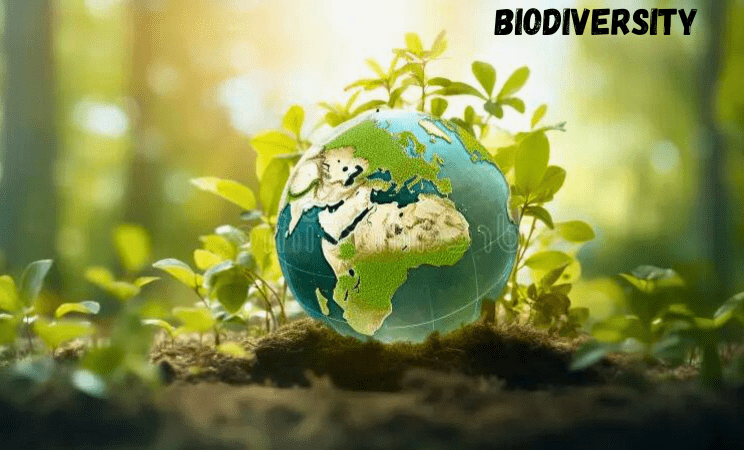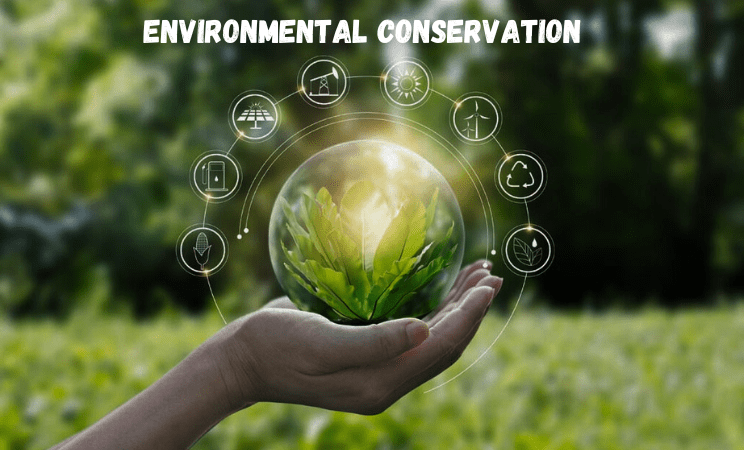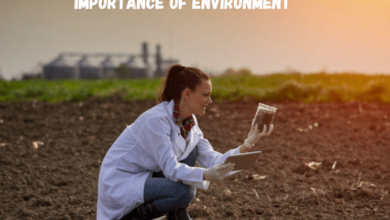Biodiversity Conservation: Preserving Earth’s Variety

Biodiversity: Biodiversity, often referred to as “the variety of life,” is the rich tapestry of Earth’s ecosystems, species, and genetic diversity that has evolved over billions of years. It is the symphony of life that sustains our planet and provides us with food, medicine, clean air, and a stable climate. Biodiversity is essential for human survival and the well-being of all living organisms, yet it is facing unprecedented threats due to human activities. This 5000-word article explores the importance of biodiversity, its threats, and the crucial strategies for its conservation.
Ecosystem Services
Ecosystem services are the invaluable benefits that nature provides to humanity, sustaining life on Earth. They encompass a broad spectrum of contributions, including provisioning services like food, water, and medicine. Regulating services, such as climate control, water purification, and disease regulation, maintain the delicate balance of our environment. Ecosystems also offer support services, such as nutrient cycling, which ensures the fertility of soils.
And pollination, is crucial for crop production. Additionally, the cultural services provided by nature, such as aesthetic and spiritual inspiration, and recreational opportunities.
And a sense of place, enrich human lives in profound ways. Recognizing the significance of ecosystem services is essential for promoting sustainable practices and conserving biodiversity, as they are the foundation of our well-being and the health of the planet.
Genetic Diversity
Genetic diversity is the variability of genes within a population or species. It is a fundamental component of biodiversity, contributing to the adaptability and survival of organisms in ever-changing environments. The diversity of genes allows species to evolve, develop resistance to diseases, and adapt to new ecological niches. It is the genetic diversity that underpins selective breeding in agriculture, creating disease-resistant crops and resilient livestock. In the pharmaceutical industry, genetic diversity is a valuable resource for developing new drugs and treatments. However, genetic diversity is threatened by habitat destruction, pollution, and other human-induced factors. Conservation efforts that focus on preserving the genetic diversity of species are critical to ensure the long-term health and viability of ecosystems and the sustainability of life on our planet.
Resilience and Stability
The resilience and stability in ecosystems are the cornerstone of a healthy and functional environment. Resilience refers to an ecosystem’s ability to withstand and recover from disturbances, such as natural disasters or human activities, without undergoing significant damage. Stability, on the other hand, implies a state of equilibrium where the ecosystem maintains its structure and functions over time. Biodiversity plays a vital role in enhancing both resilience and stability. Diverse ecosystems are better equipped to adapt to changing conditions, absorb shocks, and continue to provide essential services like clean water, food, and climate regulation. Protecting biodiversity is, therefore, key to ensuring the planet’s long-term health and the well-being of its inhabitants.
Habitat Destruction
Habitat destruction, driven by human activities, is a critical global concern. It refers to the alteration or complete removal of natural environments, from forests to wetlands, that countless species rely upon for their survival. Deforestation, urbanization, and industrial development are among the leading causes. This disruption not only displaces wildlife but also disrupts delicate ecosystems, leading to declining biodiversity. Species that cannot adapt or find new habitats face extinction. Addressing habitat destruction is paramount for conserving Earth’s biological richness. Sustainable land use practices and conservation efforts are crucial to mitigate the devastating impacts of this ongoing threat to our planet’s ecosystems.
Invasive Species
Invasive species, whether plants, animals, or microbes, are non-native organisms introduced to new ecosystems, where they wreak havoc. They outcompete native species, disrupt food chains, and alter habitats, often leading to ecological imbalances. Invasives can cause economic damage, damage human health, and diminish biodiversity. Human activities, such as global trade and travel, facilitate their spread. Combating invasive species requires early detection, prevention, and effective management strategies. It’s a critical challenge in biodiversity conservation, as these invaders can irreversibly transform ecosystems, emphasizing the need for global cooperation to control and mitigate their impacts and preserve the delicate balance of Earth’s ecosystems.
Sustainable Land Use
Sustainable land use is an approach that seeks to balance human development and resource utilization with the preservation and responsible management of ecosystems. It involves using land and its resources in a way that meets the current needs of society without compromising the ability of future generations to meet their own needs. Key principles of sustainable land use include minimizing habitat destruction, conserving natural resources, reducing pollution, and promoting biodiversity.
Sustainable land use practices encompass various strategies, such as organic farming, agroforestry, and responsible urban planning. These approaches prioritize the long-term health of ecosystems while ensuring that communities can thrive economically and socially. By recognizing the finite nature of our planet’s resources and the interconnectedness of ecosystems, sustainable land use is crucial in mitigating environmental degradation and fostering a harmonious coexistence between humans and nature.
Invasive Species Management
The invasive species management is a critical component of biodiversity conservation. To Invasive species, when introduced into non-native environments, can wreak havoc on ecosystems, outcompeting and displacing native species, disrupting food chains, and altering the balance of nature. Managing invasive species involves a range of strategies, including early detection, rapid response, and effective control measures. These methods often require a combination of physical, chemical, and biological interventions tailored to the specific invasive species and the ecosystem it impacts. Furthermore, preventing the introduction of invasive species through international regulations, public awareness, and responsible trade practices is essential. Successful invasive species management not only protects native biodiversity but also ensures the resilience and health of ecosystems upon which human societies depend.
Ongoing Challenges
Ongoing challenges in biodiversity conservation persist on multiple fronts, impeding our efforts to protect the rich tapestry of life on Earth. Illegal wildlife trade remains a critical concern, as it threatens numerous species and ecosystems. Political and economic interests often drive deforestation, habitat destruction, and overexploitation of natural resources, undermining conservation initiatives. Weak enforcement of environmental laws and regulations further exacerbates these issues, allowing harmful practices to continue unchecked.
In addition, climate change, driven by greenhouse gas emissions, presents an ever-mounting challenge. Species face habitat shifts, disruptions in food availability, and increased vulnerability to extreme weather events. Addressing these challenges necessitates global cooperation, policy changes, and grassroots efforts to raise awareness and advocate for the urgent need to protect Earth’s biodiversity. The battle to secure the planet’s diversity continues, requiring dedication and innovation to overcome these persistent obstacles.
The Role of International Cooperation
The role of international cooperation in addressing global challenges, particularly in the context of biodiversity conservation, cannot be overstated. Biodiversity knows no borders, and its preservation requires collective efforts from nations worldwide. International agreements and conventions, such as the Convention on Biological Diversity (CBD) and the United Nations Framework Convention on Climate Change (UNFCCC), provide a platform for countries to collaborate on crucial issues.
These agreements enable nations to set targets, share knowledge, and pool resources to protect biodiversity and combat climate change. International cooperation promotes the exchange of best practices and scientific expertise, fosters diplomatic relations, and ensures financial support for conservation efforts. In an increasingly interconnected world, collaboration among nations is imperative to tackle the intricate web of biodiversity loss, habitat destruction, and climate change that affects us all.
The Importance of Education and Advocacy
Education and advocacy play a pivotal role in the preservation of biodiversity. They empower individuals and communities to understand the significance of biodiversity, its intricate connections to our well-being, and the pressing threats it faces. By fostering a deeper awareness, education instills a sense of responsibility and encourages informed, sustainable choices. Advocacy amplifies this impact by mobilizing voices for policy changes, sustainable practices, and conservation efforts. When people are equipped with knowledge and motivated to act, they become effective stewards of the environment, pushing for responsible land use, wildlife protection, and climate mitigation. Education and advocacy are our catalysts for a biodiverse future.
Conclusion
The preservation of biodiversity is not merely an environmental endeavor; it is a moral and existential imperative. Biodiversity is the lifeblood of our planet, providing us with essential ecosystem services, genetic diversity, and the resilience needed to navigate an ever-changing world. While it faces numerous threats.
From habitat destruction to climate change, we have the knowledge and tools to make a difference. International cooperation, sustainable practices, and public awareness are the keys to safeguarding Earth’s variety. The future of our planet and the countless species that call it home depends on the choices we make today. It’s time to act, to protect, and to cherish the remarkable diversity of life on Earth.
FAQs
Why is biodiversity important?
Biodiversity sustains ecosystems, provides resources, and maintains a stable climate, essential for all life.
What are the major threats to biodiversity?
Habitat destruction, pollution, invasive species, climate change, and overexploitation endanger biodiversity worldwide.
How can we conserve biodiversity?
Conservation involves protected areas, sustainable land use, invasive species control, climate mitigation, and sustainable consumption.



